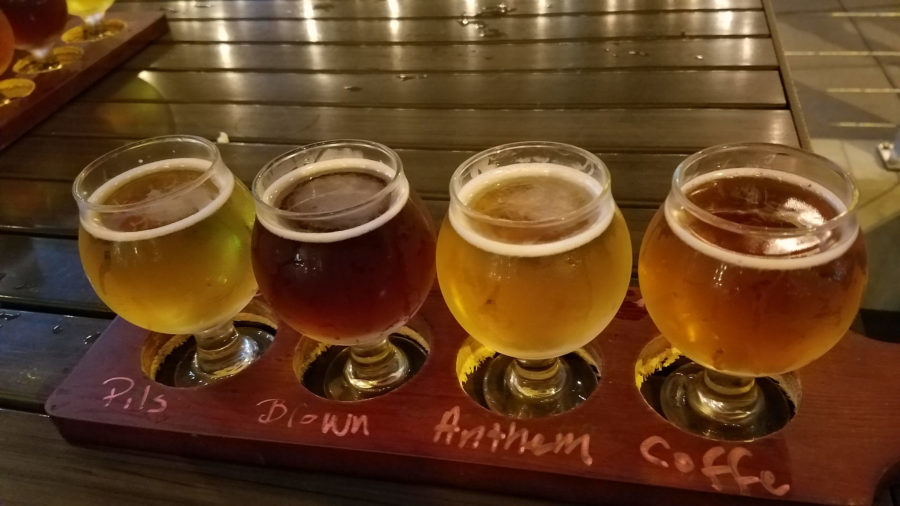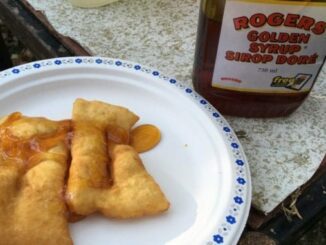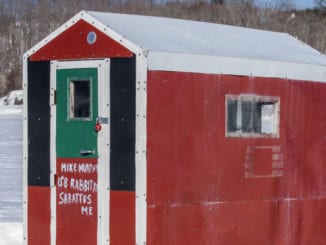
Locally made small-batch craft beer is becoming increasingly popular across North America, with microbreweries opening from Goshen to Winnipeg and every place in between. For Mennonites, most of whom are used to drinking home-brewed dandelion wine behind the barn, the world of craft beer can be intimidating, but it doesn’t have to be. The Daily Bonnet has created this handy guide to help Mennonites navigate the waters of your local craft beer scene.
ABV: On bottles of craft beer you will often see an ABV percentage. This is known as Aganetha Barkman’s Variable. This tells you what percentage of the profits go to buying off Mrs. Barkman so she won’t report you to the elders. The higher the ABV percentage, the less likely Mrs. Barkman is to disclose your drinking to the authorities.
IBU: International Baptism Unit. This refers to the number of times a beer has been baptized, ranging from 1-100. Half Pints Little Scrapper IPA, for example, has an IBU score of 50, which will impress experienced craft beer drinkers, but those just starting with craft beer may want to begin with a beer that hasn’t been baptized quite so often.
A “Flight” of Beer: When entering a craft beer bar or brewery tap room, you can order something called “a flight” which is small samples of 4 or 5 different beers. This is very convenient for Mennonites. Instead of sharing that one pint between the six of you all evening, you can each drink one 4 ounce sample beer and call it a night. It’s the fiscally responsible thing to do.
Growler/Howler: You may have noticed those refillable brown jugs similar to the ones your grandma used to buy Javex in. These days, “growlers” (as the large brown jugs are called), or “howlers” (as the smaller ones are designated) are not normally used for bleach, but offer a cheap refillable container for beer. Keep it out of the barn and away from your cousin Corny and your growler will serve you well.
Beer styles: There are many different styles of beer based on the type of hops, malts, and yeast that are used. Some are sour, like your Oma Berg’s rhubarb platz on an off day. Others are bitter, like your Uncle Heinrich’s attitude toward the Loewen family. Others can be as sweet as Edna Fast during that memorable church picnic back in 1962. Explore as many flavours as you can.
Trappist Beer: Believe it or not, there are nearly a dozen Trappist monasteries around the world, where men of God devout themselves to silent prayer and making tasty beer. Many of these beers are particularly high in ABV, which means Mrs. Barkman is very unlikely to rat you out for drinking it. It’s true the Trappists are Catholics, but some recently uncovered letters by Menno Simons to Conrad Grebel indicate that his one regret in abandoning the Catholic church in 1536 was all the great beer he was leaving behind.
Brewpub vs. Taproom: A “brewpub” is a restaurant/pub that brews its own beer. A taproom is a room attached to a brewery where you can sample the beer – they usually don’t serve food. Think of it this way: The brewpub is like one of those housebarns at the museum – the kitchen and work area are attached and smells tend to waft in both directions. The taproom, on other hand, is like how you’re in the barn and sometimes test a bit of milk straight from the udder.
Mennonite Brewpubs and Taprooms: Based entirely on their proximity to areas with a lot of Mennonites, here are a few brewpubs and/or taprooms to visit for yourself. Each of these places offers fine craft beer and a conveniently-located hitching post. Service is in English and Pennsylvania Dutch or English and Plautdietsch.
(These are all real).
- Abbotsford, BC: Field House Brewing, Old Abbey Ales, and Ravens Brewing
- Asuncion, Paraguay: Sajonia Brewing Company
- Bird-in-Hand, PA: Rumspringa Brewing Company (I promise this is real!)
- Elkhart, IN: Iechyd Da and New Paradigm
- Goshen, IN: Goshen Brewing Company, Back Alley, and Thomas-Stiegltiz
- Harrisonburg, VA: Three Notch’d, Brothers, Pale Fire, and Wolfe Street
- Kitchener, ON: Abe Erb Brewery
- Lancaster, PA: Lancaster Brewing Company, Iron Hill, and Spring House
- Middlebury, IN: Wedgewood Brewing Company
- Regina, SK: Rebellion Brewing
- Saskatoon, SK: Paddock Wood and Prairie Sun
- St. Jacobs, ON: Block Three
- Wichita, KS: Wichita Brewing Company, Aero Plains, Central Standard, and River City
- Winnipeg, MB: Devil May Care, Torque, Barn Hammer, One Great City, Brazen Hall, Stone Angel, Little Brown Jug, and Half Pints
So, there you have it. You have absolutely no reason to continue drinking your dad’s malt liquor anymore.




